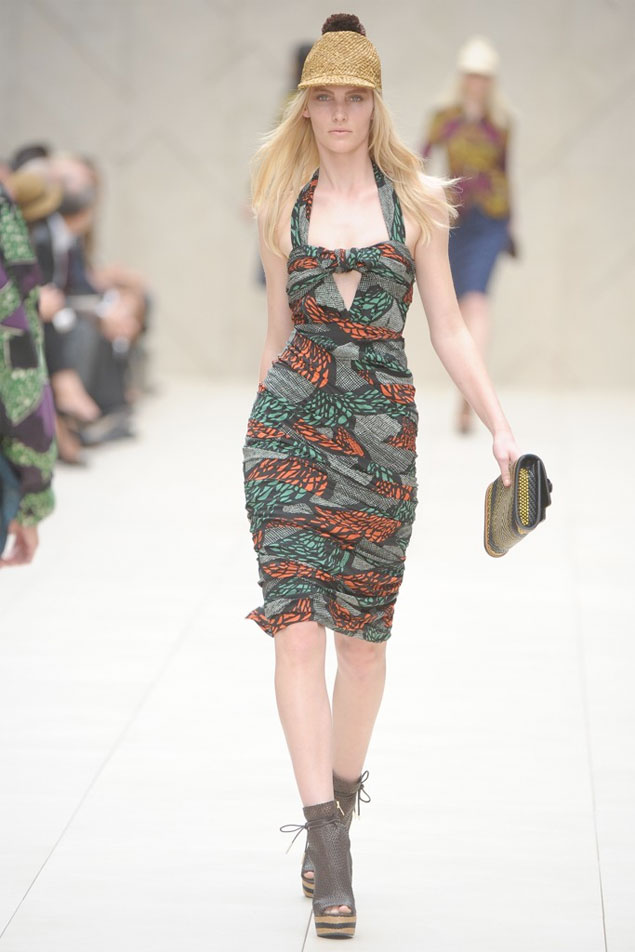
As always, Burberry Porsum S/S 12 was one of the highlights of London Fashion Week. Knotted, draped and wrapped; skirts and dresses in African fabric and African inspired fabric, were juxtaposed with classic “Burberry brit chic” military jackets and structured cargo coats. Even some outerwear was done in the classic styles to add dimension to their less patterned counterparts. The new look was executed famously.
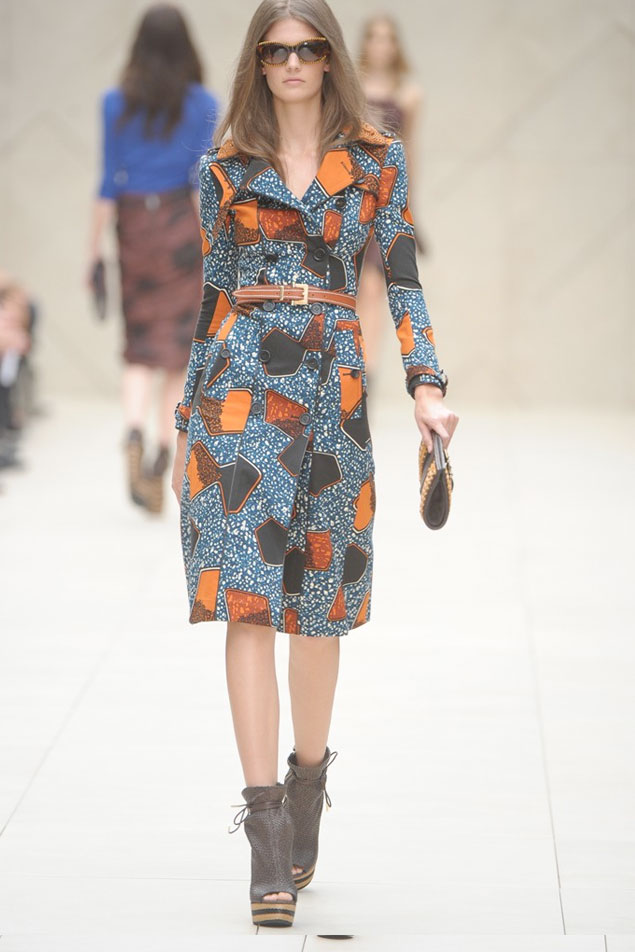
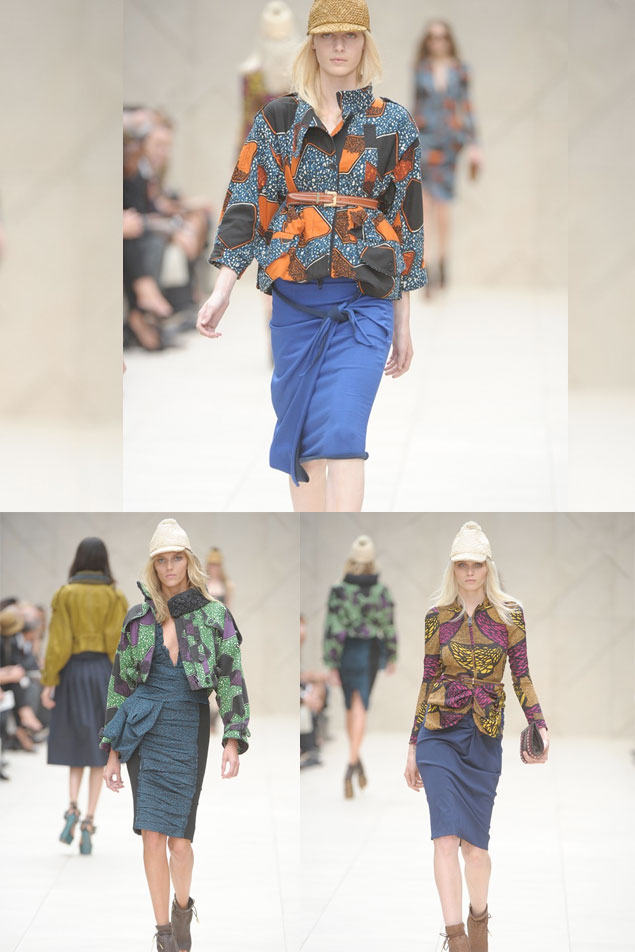
But, in all the styled perfection of the beautiful African inspired designs of Christopher Bailey…I was left a bit frustrated. I have found that African inspired designs, jewelry, and fabric only become relevant when non-Africans deem them to be. Which perpetuates the disenfranchisement of African designers that use elements of their cultures to influence their contemporary fashion designs. And gives non-African designers who seek out elements of African culture for a dose of “exotic” inspiration, more license to continually do so.
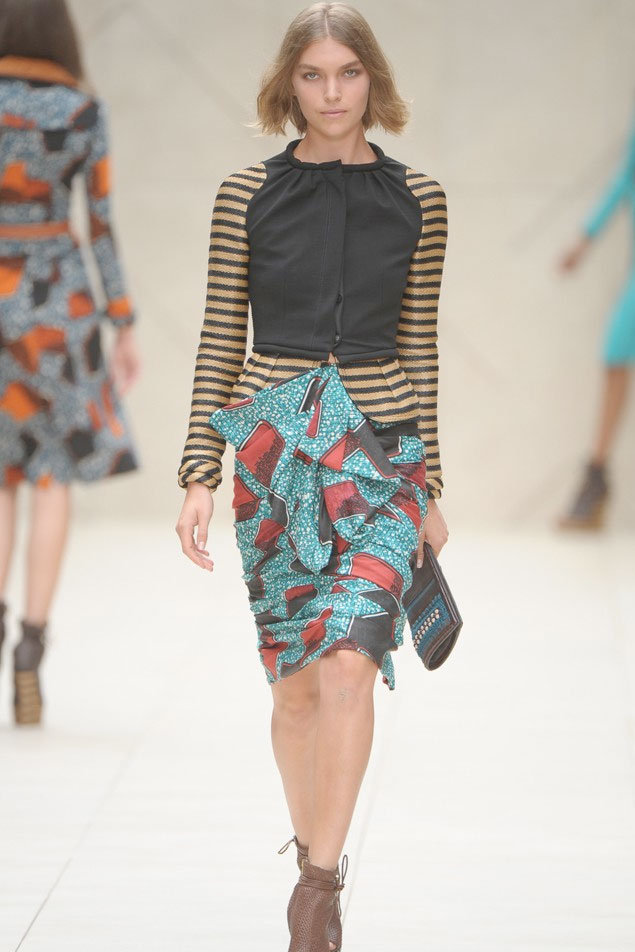
Burberry

Christie Brown
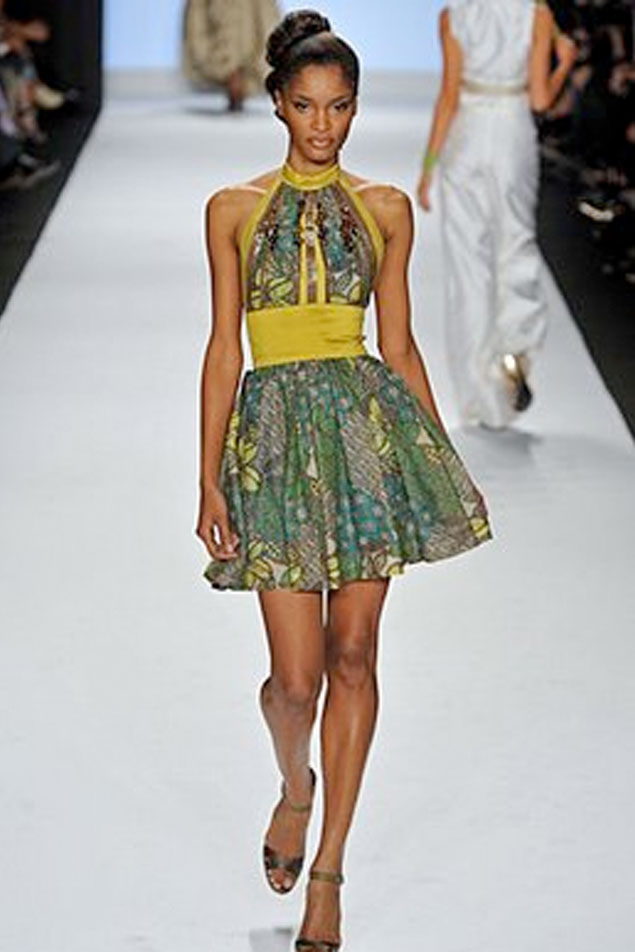
Korto Momulu
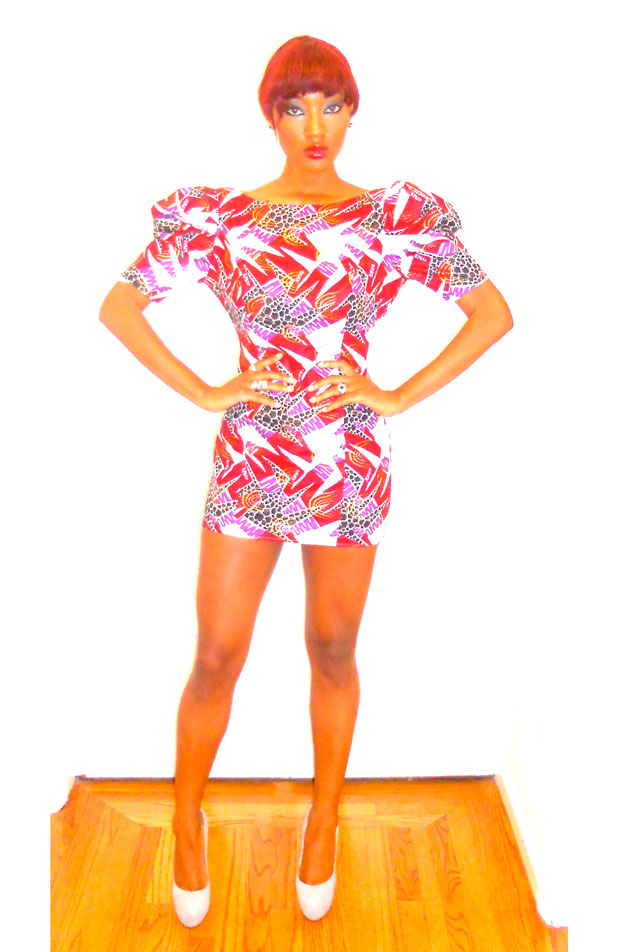
Me in a PISTIS design
Though Christopher Bailey did a phenomenal job using African fabric to create his designs, was his use of the fabric any better than the African designs of Christie Brown, Pistis or Korto Momulu shown above? …It’s hard to say. But what cant be refuted is that HIS skirt, or dress, or jacket; has a much higher chance of being sold in Barney’s, Bloomingdales, and Sak’s than his African peers. Herein lies my major issue. There is not an equal chance given to African designers when they are working with their native fabrics, yet when non-Africans make the decision to incorporate it into their collections; that is when the fashion industry responds unabashedly…Even ushering in a whole season of “Tribal” to get consumers to respond. This to me just doesn’t seem right.
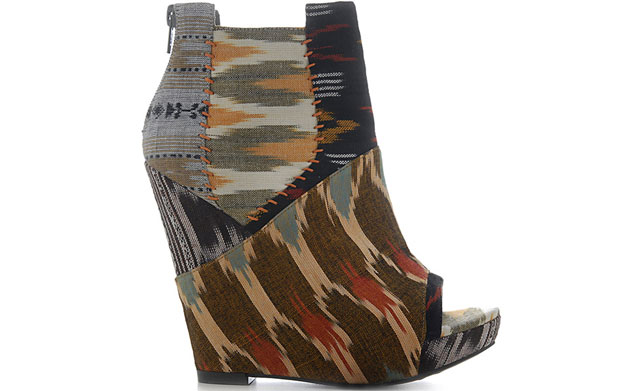
Julian Louie "Tribal" shoes for Aldo

LAMB "tribal" designs
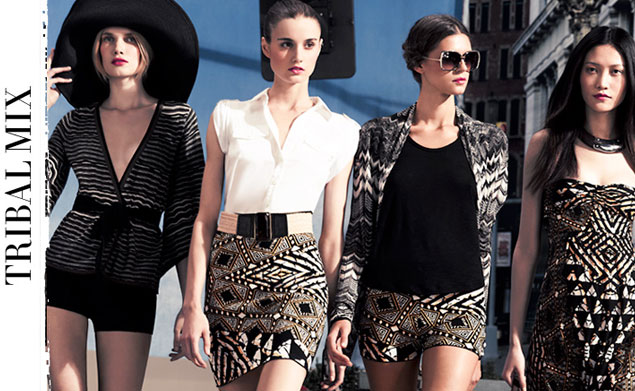
BCBG ad, for "TRIBAL" clothes inspired by Mali's Mud cloth

Mud Cloth

Mud Cloth
These designers go to African countries and take pieces of the culture and use it as inspiration for their latest collections. Like Mali where Mud cloth is a symbol of national identity, delineating a regions cultural history or even as personal as an individual’s life transitions. Or Ghana, where the Kente cloth birthed from the Akan people, can be an incredibly important symbol of wealth, power and status. Kente is not used by western cultures as often because of how expensive it is, but African wax print cloth from the Western African region is (see LAMB designs above). African wax print cloth often can have the same symbolism as Kente, only the beautiful patterns, designs and colors are printed and not weaved. So when these cloths are lifted from their native cultures and used to add an element of exoticism to a westernized collection (like BCBG’s use of Mali’s Mud cloth), it cheapens its significance and value. So though the BCBG and Burberry designs are indeed stylish, wearable and beautiful; there is an element of inauthenticity that can’t be ignored. Beauty without depth is much less interesting than beauty with depth.
So what can be done to rectify this situation?…I don’t believe it’s that complicated.
African’s don’t consider their fashions to be trendy or as superficial as what’s “popular” for a particular season…And neither should the rest of the world. The fashion industry needs to recognize the breadth of talent of African designers, and see their designs for the history, culture and art behind them. Once the fashion industry understands that, then they will be able to output a more consistent message to the consumer; allowing space for African designers and African fashion year round.
What can you as a consumer do?…Seek out African brands.
African designer’s are creating beautiful and contemporary cloths with their fabrics; and incorporating their designs into your style on a regular basis will only make you a more enlightened and global fashionista. Let’s stop relying on non-African designers like Christopher Bailey (as talented as he may be) to relay inspired African designs to the world….Let’s seek them out ourselves until the industry responds to our desires. If we demand it, the industry will supply it.
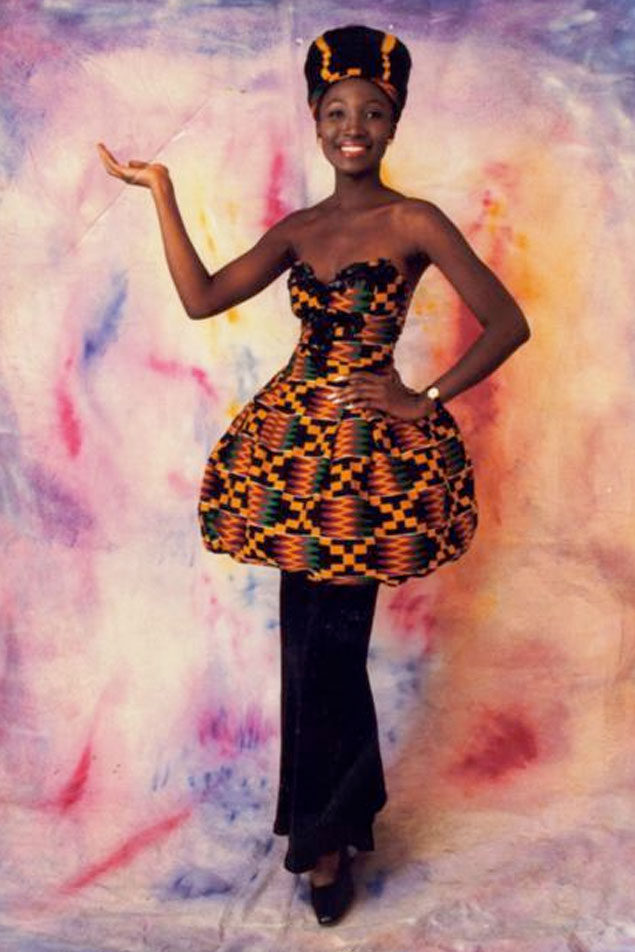
A vintage Joyce Ababio Kente Cloth design
Author, Noelle Bonner, “Challenge the status quo, cover the truly inspiring & aim to make an impact. Live…Fashion. Beauty. Style.”
NoelleBonner
Latest posts by NoelleBonner (bheka konke)
- Fashion African “Game bemali” - April 17, 2014
- Kokudalula Edward Enninful: A Fashion Editor, An Man African, Behind… - June 8, 2012
- Ukwethula Origin Boutique & Verna Kyulah, the New Collection. - December 2, 2011



